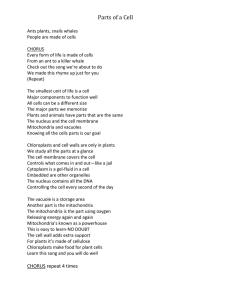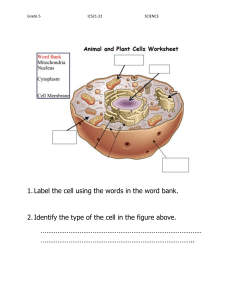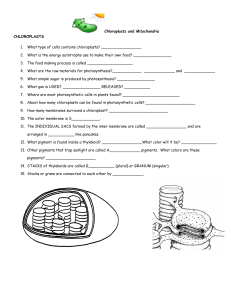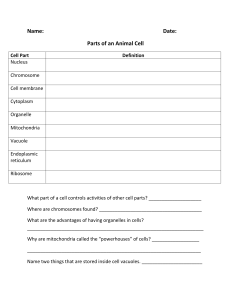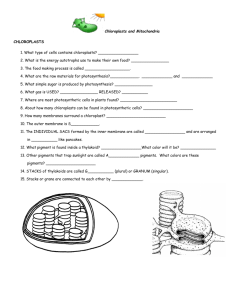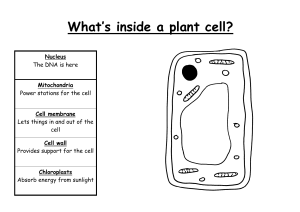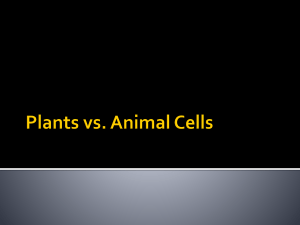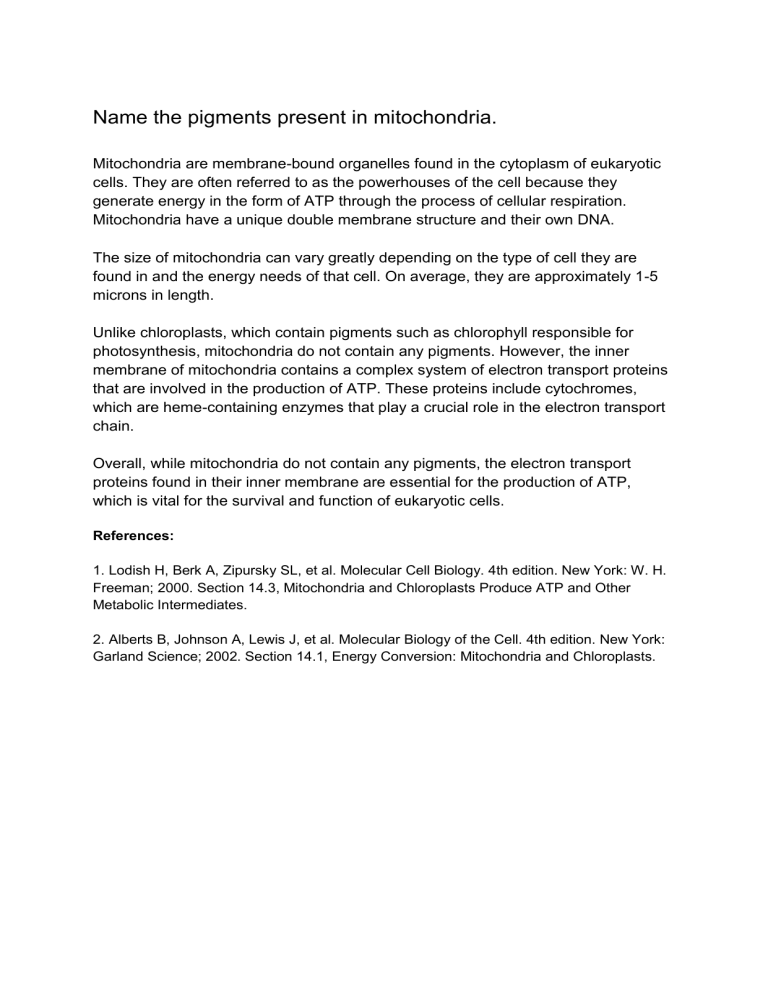
Name the pigments present in mitochondria. Mitochondria are membrane-bound organelles found in the cytoplasm of eukaryotic cells. They are often referred to as the powerhouses of the cell because they generate energy in the form of ATP through the process of cellular respiration. Mitochondria have a unique double membrane structure and their own DNA. The size of mitochondria can vary greatly depending on the type of cell they are found in and the energy needs of that cell. On average, they are approximately 1-5 microns in length. Unlike chloroplasts, which contain pigments such as chlorophyll responsible for photosynthesis, mitochondria do not contain any pigments. However, the inner membrane of mitochondria contains a complex system of electron transport proteins that are involved in the production of ATP. These proteins include cytochromes, which are heme-containing enzymes that play a crucial role in the electron transport chain. Overall, while mitochondria do not contain any pigments, the electron transport proteins found in their inner membrane are essential for the production of ATP, which is vital for the survival and function of eukaryotic cells. References: 1. Lodish H, Berk A, Zipursky SL, et al. Molecular Cell Biology. 4th edition. New York: W. H. Freeman; 2000. Section 14.3, Mitochondria and Chloroplasts Produce ATP and Other Metabolic Intermediates. 2. Alberts B, Johnson A, Lewis J, et al. Molecular Biology of the Cell. 4th edition. New York: Garland Science; 2002. Section 14.1, Energy Conversion: Mitochondria and Chloroplasts.

